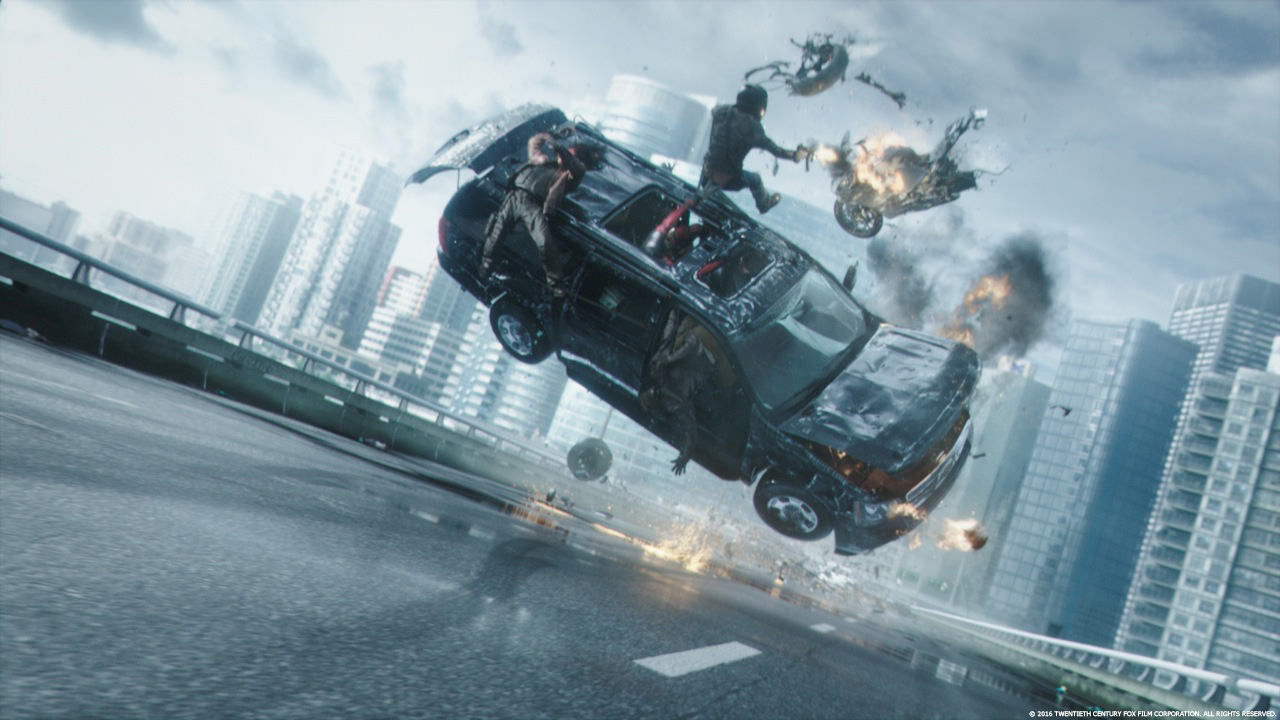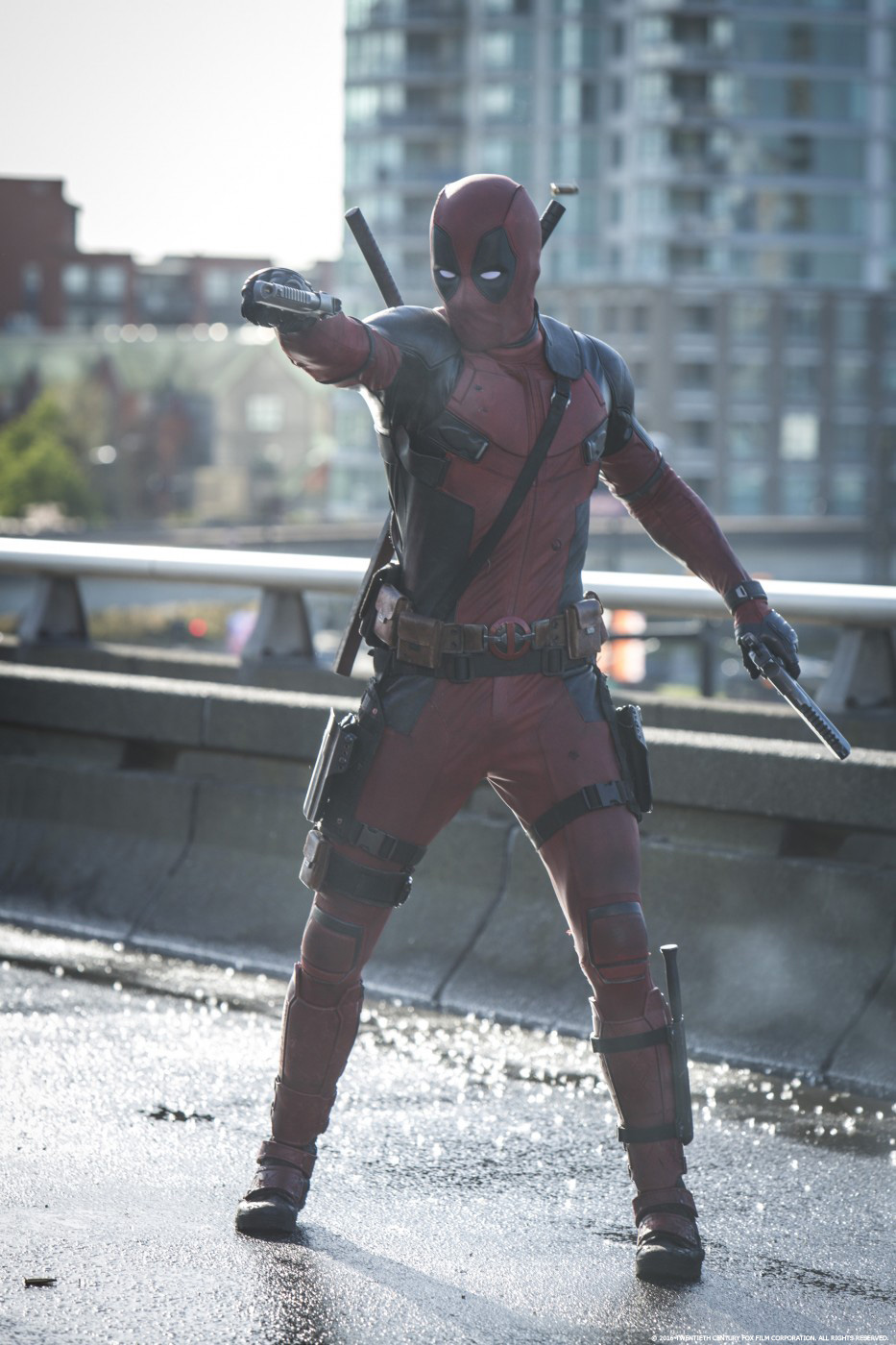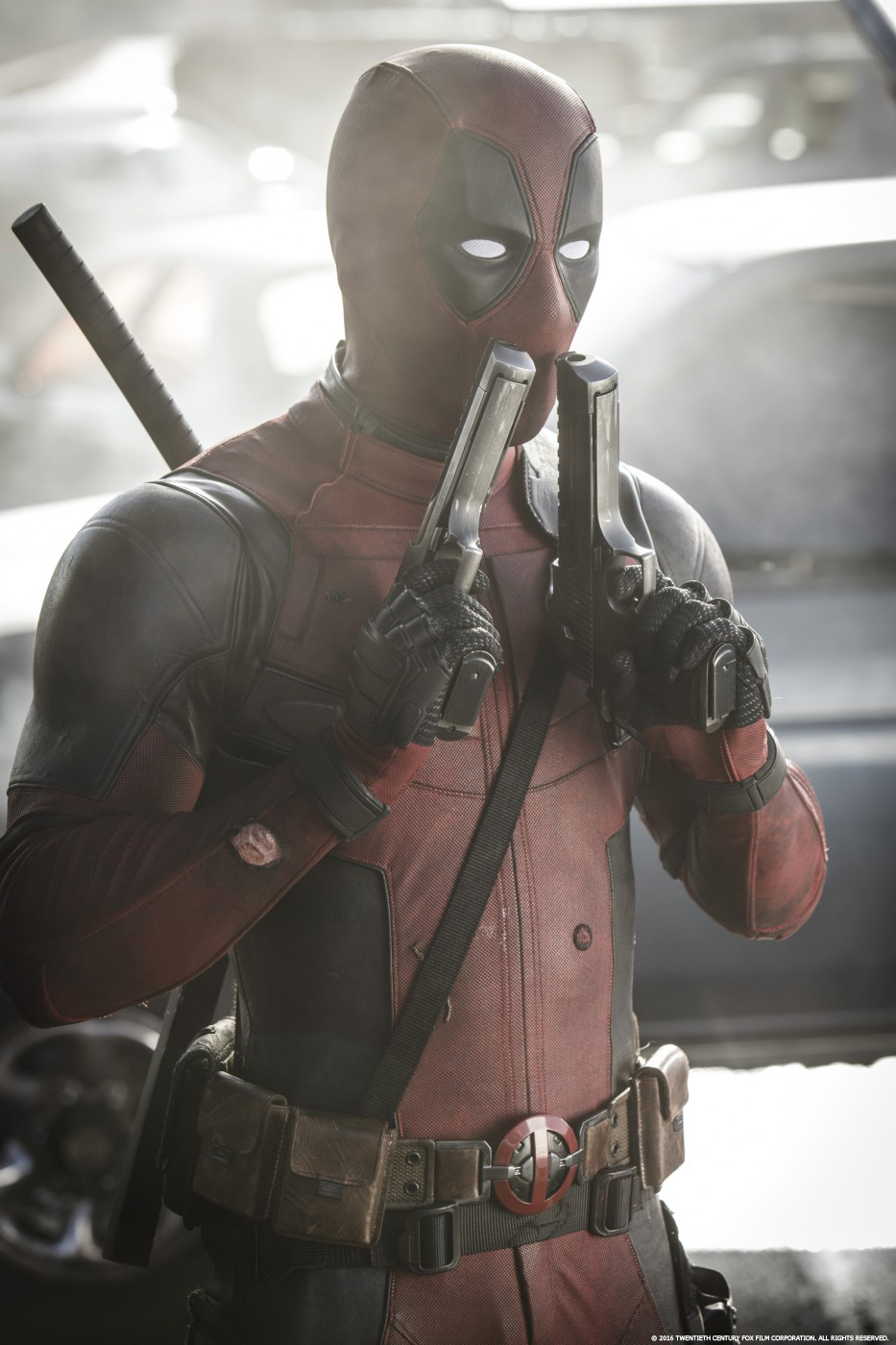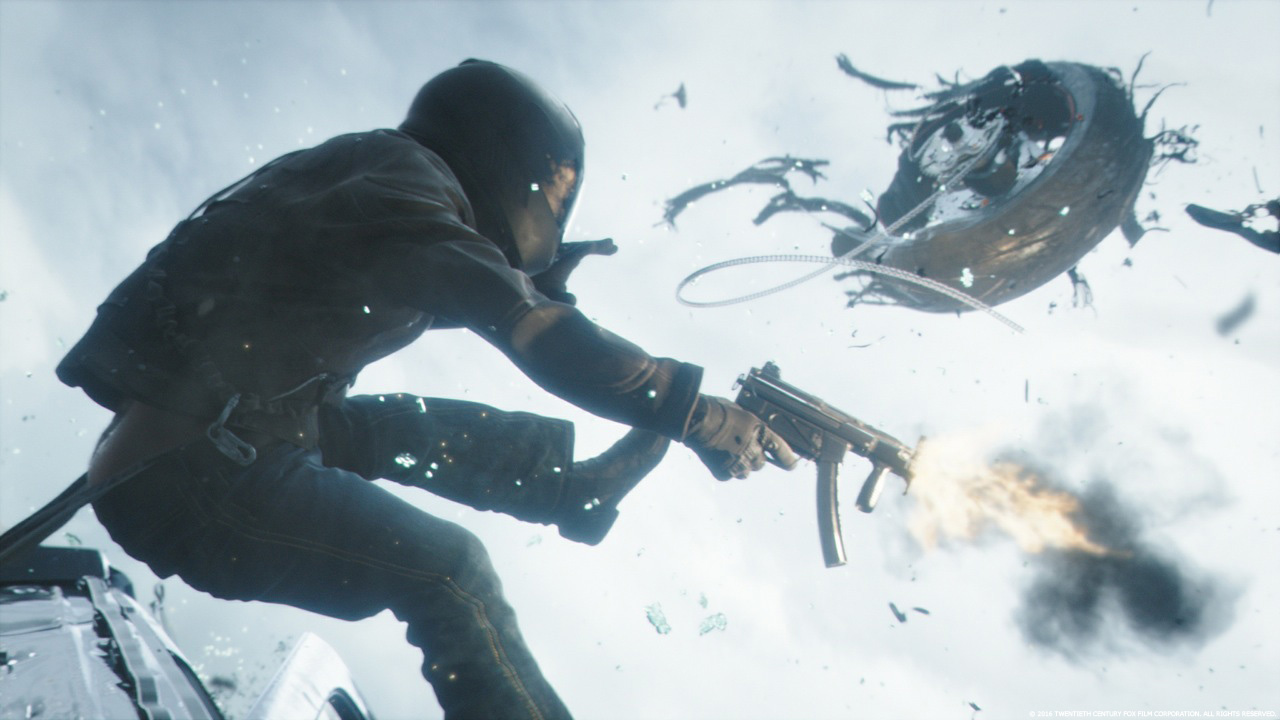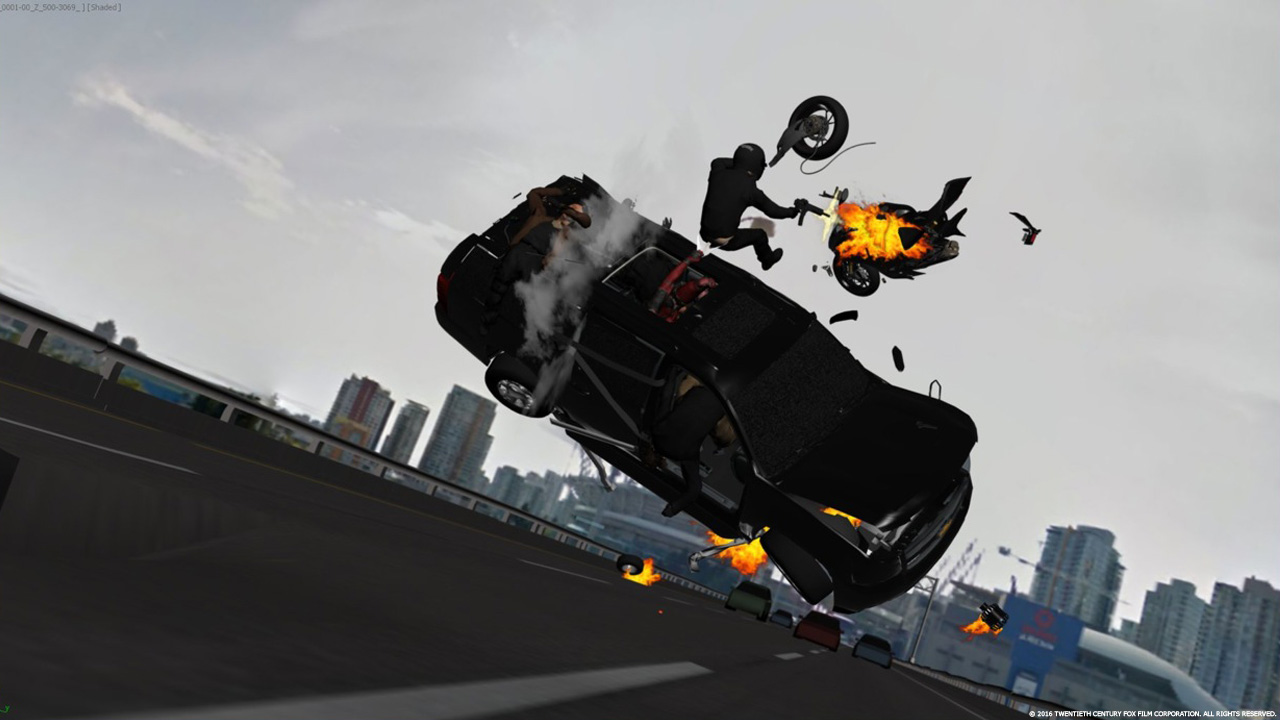The team of Blur Studio composed of Tim Miller (Director & Founder), Pauline Duvall (VFX Supervisor) and Franck Balson (Previsualization Supervisor) talks about the various challenges faced on DEADPOOL.
// Tim Miller – Director & Founder
What is your background?
I studied illustration and animation in college because I’ve always loved both the visual arts and storytelling. Which is what drew me to comics in my teens… an amazing medium for illustrated storytelling.
Deadpool is your first feature film. How did you approach this show?
With lots of fear. Some might say terror even. Kidding… I approached it the same as directing shorter form work, there’s just more of it. Running a sizeable animation company while directing short form animation has a lot of similarities to directing a film in terms of managing people and budgets, making decisions, and hopefully producing something creatively worthwhile. All while trying to not have everyone hate you.
What was your feeling to bring to big screen your favorite character?
The first time I read this script I fell in love. Deadpool was always one of my favorite characters and I thought the writers (Rhett Reese and Paul Wernick) had captured the essence of the character perfectly. It was the kind of project I’d always dreamed of and something I felt perfectly suited for – I felt like I had the nerd cred and the film making experience to do something cool.
What was the most challenging aspect for you to direct a live action movie?
Coming from primarily all-CG animation it was simply my lack of technical knowledge for live action. A film set has a lot of people who are experts in their respective disciplines and I knew little to nothing about practical cameras, lighting, sound recording etc. So I just stowed my ego and asked a lot of questions. Luckily my crew was great and everyone was amazingly helpful.
You have a strong animation background. How does that helps you on this show?
All of the VFX obviously, but more than that I feel like I’m particularly attentive to how people move through space. There’s an optimum, organic way for people to speak and move so that shots feel organic and natural. Being an animator and having spent years trying to create that natural feeling of movement makes me maybe a little more attentive than most. Which in turns helps me when blocking with the actors and working out the flow of a scene.
What was the most complicated sequence to filmed and why?
There were several. Might be a tie between the fight on the flight deck of the tilting carrier – the set was on a gimble part of the time and there was TONS of set extension. But the fight in the burning warehouse was tricky too – because there’s fucking fire everywhere!
How did you work with VFX Supervisor Jonathan Rothbart?
We discussed everything and made our plans and then I tried to stay out of his shit as much as possible. Jonathan’s great and he knew exactly what we were going for so I knew I didn’t need to micromanage him. It was an easy alliance and because I come from the VFX world I think there was a shorthand to problem solving on set and reviews in post that made everything flow smoothly despite our tight schedule.
What is your next project?
I’m afraid that’s top secret information and I like you Vincent. I wouldn’t want to have to kill you.
What are the four movies that give you the passion for cinema?
BLADE RUNNER, ALIENS, GLADIATOR and APOCALYPTO.
// Pauline Duvall – VFX Supervisor
What was done by Blur Studio?
Blur Studio’s main role on DEADPOOL was to support Tim Miller, the film’s director and Blur’s founder, from beginning to end. Blur served as Miller’s creative home base for the film, and a place to oversee conceptual development, editing, visual effects, and post-production in Los Angeles, and to streamline communication and collaboration across vendors. Blur developed new in-house tools and pipelines to handle the demands of the film, ultimately creating the opening and end title sequences, completing 36 visual effects shots in the film, and delivering detailed previsualization for several of the film’s key action sequences.
How did you work with the other VFX studios and share assets with them, especially about Colossus?
It was clear from the beginning that many assets would be shared across various vendors so close collaboration was encouraged. Typically, we would receive or deliver assets and then have conference calls to discuss any questions or any additional requests. With Colossus being so complex of a character there was a lot of collaboration with Digital Domain (DD) as he evolved.
Can you explain in details about Colossus creation?
We received a base model and textures from DD. We then reconstructed their shader, and also matched the way the ridges animated and flowed over the surface of his body. One of our sequences towards the end of the film required the most damaged flavor of Colossus which we were tasked to lookdev. We received initial concept art, and were given the freedom to play around with the design of him. We spent time researching how different metals reacted to heat, foreign object damage, various levels of scratches, patina etc. We then used the undamaged Colossus as the base, then resculpted, textured, and shaded Colossus which you can see in the end sequence after the carrier collapsed.
How did you handle the Colossus animation?
Colossus is a culmination of 4 different actors. Andre Tricoteux – on set, TJ Storm – body motion capture, Greg Lasalle – facial mocap and Stefan Kapicic – voice actor.
Our animation team was diligent about making sure the performance between the body motion capture and the facial performance was cohesive. We would first receive the body motion capture data, clean it up and block out the scenes. The facial performance was captured using Mova, then retargeted to Colossus’ geometry using DD’s Direct Drive process. With the face and body motion coming from 2 different actors we knew that we’d need to be flexible with the animation. We created tools that would allow us to alter the facial capture or the body capture to absorb any changes Tim might have.
Can you tell us more about the lighting and rendering for Colossus?
We lit and rendered using 3D Studio Max and Vray. In one of the cab sequences, part of the joke was that Colossus was so large that he was uncomfortably squished into the backseat of the cab. There was an camera array that captured footage driving down the street which gave us accurate exterior HDRI to reflect onto him. Although these shots look simple, some of our Colossus cab ride shots took upwards of 24 hours per frame to render. The long render times were due to his size in frame and complex shader. We built the cab and used a NTW (Negasonic Teenage Warhead) digital double to give him something to reflect as well as light the character
What was the main challenge for you and your team?
The main challenge was the short schedule, but were were so happy to help Tim realize his vision for this sequence. It really helped to set the initial tone for the film. The opening title sequence was a 85 second full CG shot of a frozen moment during a freeway chase. There were so many assets in play, we used some shared assets but several assets needed to be redone because our needs were different. From the time we started on the Opening Title Sequence to completion was about 8 weeks.
How long have you worked on this show?
I was on the show for about 6 months.
How many shots have you done?
The Blur team completed 37 shots in the movie, which includes the opening title sequence. In addition to this our design team did the Main On Ends, and our layout team was a big part of the previz for key sequences.
// Franck Balson – Previsualization Supervisor
Can you tell us more about the previs process?
The previs process allows the director to see the movie before going to set, and try out ideas while it’s still relatively cheap to do so. Having worked with Tim for the past 8 years, and him being very aware of the process, made it really easy to create this initial blue print. We shot motion capture for 80% of the action sequences and some important acting beats and created an entirely CG edit of those sequences. Those then went on to inform the live action team and the VFX supervisor/producers onto how and what would be the most efficient way to create the final shots. Some sequences like the initial car chase actually stayed really close to the original previs. Having a solid previs helped Tim narrow down the sequence to a point where he was happy with it and that in turn helped inform the next stages of the movie making process. Previs was also used to create some additional scenes that were tested in the edit of the movie first and then added to the re-shoot list that was reshoot later during the year.??
The movie opens with a great opening title. How did you find the idea for it?
The idea of the frozen moment was in the first draft of the script I had the chance of reading and was kept throughout. It read as a frozen moment of the tumbling car with Deadpool kicking the asses of multiple bad guys.?From there we had complete freedom to explore what that might look like. Since we had to previz the action sequence that encompassed that crash, we started by the layout of that specific frozen moment to make sure that we could have all the characters end up in their respective spots and that it still made some sense as far as « physics » but also give it some artistic direction so that the final frame would have a nice aesthetic. The traveling of the camera and what we were seeing was really defined by a set of ground rules that we gave ourselves: it had to be a constant pull back at a constant speed, start micro and abstract and finish wide and clear, introduce Deadpool halfway to make it that much more surprising that he’s kicking ass in the middle of a crash, make sure that any elements we add have meaning (a joke, a back story, some intent). ?
The wording of the titles themselves were more of a discovery and were not originally planned that way. One of the versions we made early on had the generic « bad guys », « hot chick » mostly because at that time no one but Ryan had been cast. That first pass went on to be shown to a few of people like Tim, Ryan, the writers. And everyone actually really liked that unconventional approach and found it very funny. So we ended up going with those rather than the classic « real » titles once we started working on the final pass of those titles.
Can you explain in details about its creation?
Process-wise, we created a previz version of the title sequence with low-res assets. Once the staging, placement and posing of characters, props, vehicles was approved we created / re-purposed assets from other vendors that matched our needs. Some needed a lot of up-resing because we were really up close, like the initial character and his lighter. The animation department in conjunction with the modeling team posed and refined the placement / sculpts of the characters and in parallel the scene assembly team (lighting / compositing / env modeling / shading, basically very good CG generalists that can handle a wide variety of tasks) took on the shading, lighting, comping, and refining of the scene. The FX department created static simulations (fire, smoke, debris, glass debris) that were then added in the final comp.
A big thanks for your time.
// WANT TO KNOW MORE?
– Blur Studio: Official website of Blur Studio.
© Vincent Frei – The Art of VFX – 2016


